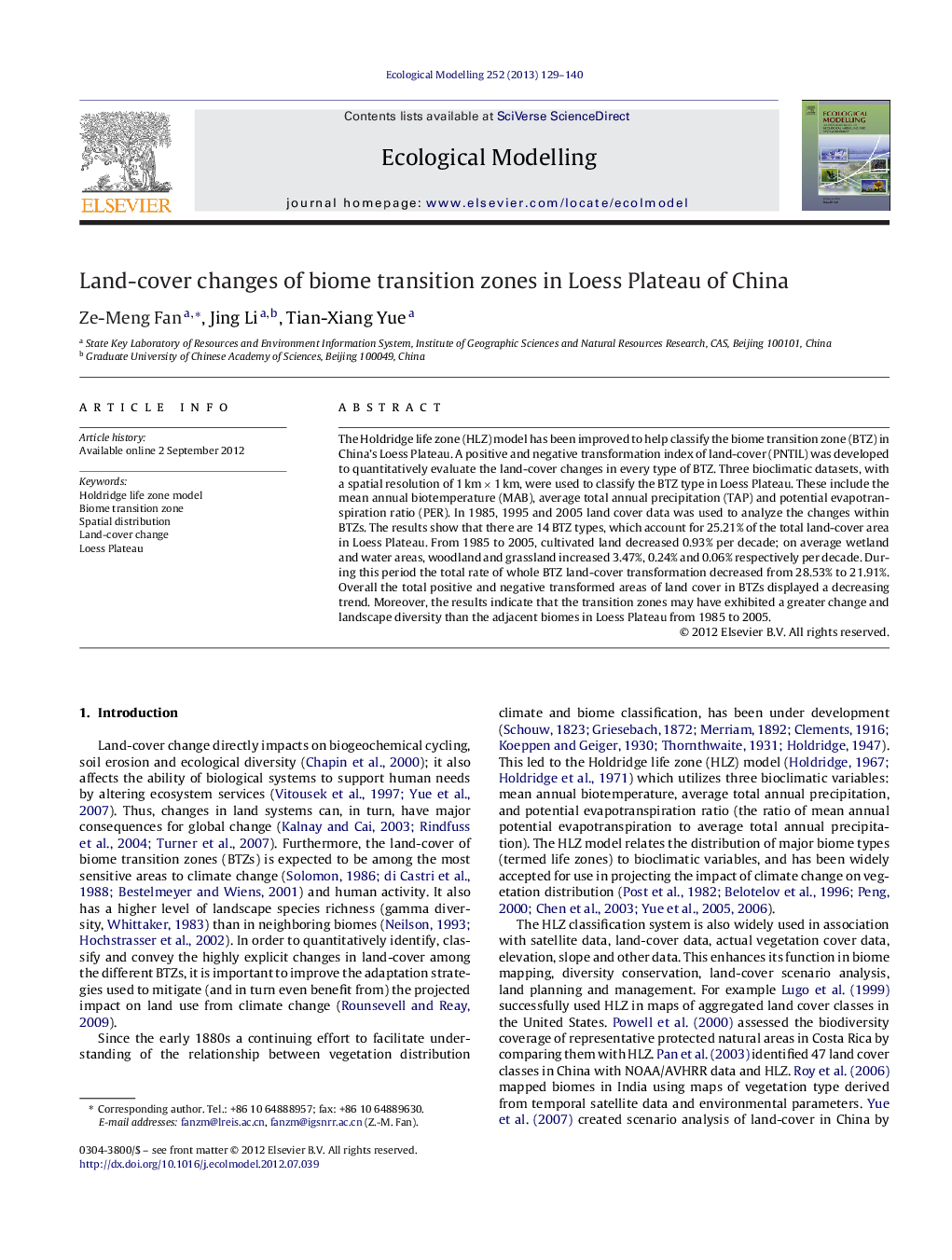| Article ID | Journal | Published Year | Pages | File Type |
|---|---|---|---|---|
| 4376196 | Ecological Modelling | 2013 | 12 Pages |
The Holdridge life zone (HLZ) model has been improved to help classify the biome transition zone (BTZ) in China's Loess Plateau. A positive and negative transformation index of land-cover (PNTIL) was developed to quantitatively evaluate the land-cover changes in every type of BTZ. Three bioclimatic datasets, with a spatial resolution of 1 km × 1 km, were used to classify the BTZ type in Loess Plateau. These include the mean annual biotemperature (MAB), average total annual precipitation (TAP) and potential evapotranspiration ratio (PER). In 1985, 1995 and 2005 land cover data was used to analyze the changes within BTZs. The results show that there are 14 BTZ types, which account for 25.21% of the total land-cover area in Loess Plateau. From 1985 to 2005, cultivated land decreased 0.93% per decade; on average wetland and water areas, woodland and grassland increased 3.47%, 0.24% and 0.06% respectively per decade. During this period the total rate of whole BTZ land-cover transformation decreased from 28.53% to 21.91%. Overall the total positive and negative transformed areas of land cover in BTZs displayed a decreasing trend. Moreover, the results indicate that the transition zones may have exhibited a greater change and landscape diversity than the adjacent biomes in Loess Plateau from 1985 to 2005.
► We improved the Holdridge life zone model to classify the biome transition zones. ► There are 14 biome transition zone types within Loess Plateau. ► The transformed areas of land cover in transition zones have a decreasing trend. ► Transition zones may be changed more than the adjacent biomes.
